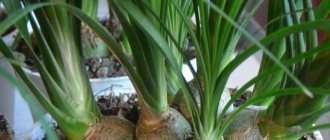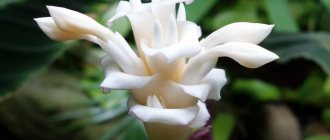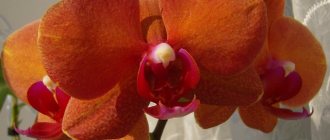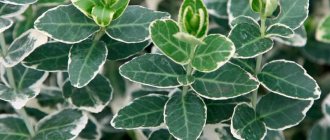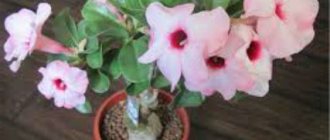Description
Ficus is a representative of the Mulberry family . The plant has become widespread - there are about 900 species. There are evergreen and deciduous types of ficus.
As for where and in what countries this indoor flower grows in the wild, it feels best in regions with a tropical and subtropical climate.
The homeland of ficus is Borneo, Southeast Asia, Ceylon . History is silent about how ficus came to Russia, but since the beginning of the 19th century, almost every house had this plant in a wooden tub or box.
The tree can reach 30 meters in height, and the size of their leaves often approaches the meter mark.
Depending on the type, ficus leaves can be green or two-colored, large or, conversely, very small.
We invite you to learn more about some types of ficus grown at home. Read all about Ficus Benjamin, Rubber-bearing, Ampelous, Variethis, Carica, Lyrata, Creeping, Retuza, Amstel King, De Dumbbell, Triangular, Ginseng, Ali, Microcarpa.
The inflorescences have a very unusual structure - the pear-shaped axis or capitate shape can be hollow, with a hole at the top. The flowers are located inside the wall and are pollinated by insects . After pollination, small fruits may develop that form infructescence. At home, the fruits can be seen quite rarely.
Reference! Many people are interested in how many years a plant lives. At home, with proper care, a ficus can live for about 15 years.
General features of the plant
The genus belongs to the Tutov family. Most representatives are evergreen and only 10% lose their leaves. Domestic and wild species have a solid leaf structure. The stipules are usually large in size and fall off quickly.
Ficus is distinguished by inflorescences with a characteristic ball or pear shape. The buds are formed on the inner surface, and the flowers themselves are small in size and light in color. They can grow singly or form in groups.
Kinds
Ficus plants have aerial roots and reproduce vegetatively. Over time, aerial roots are formed, which descend to the ground and grow into reliable supports for a massive crown. The roots of some representatives entangle the trunk of the host tree, which leads to its drying out.
Representatives of the genus differ from other plants in that they contain milky sap in all their parts. In natural conditions, ficuses grow as trees, shrubs or vines. Most species grow up to 5 meters in height under favorable conditions. Indoor varieties reach a level of 1-2 meters, and can be smaller in size.
Good to know! Plants secrete special biologically active substances that prevent the proliferation of harmful bacteria in the air.
Photo
Look at the photo of how ficus grows at home.
And a photo of how it grows in the wild.
Why does ficus turn yellow and how to fix it
A beautiful decorative foliage plant, ficus, can decorate any windowsill. The variety of species will allow you to choose a plant that is suitable for any living conditions, because there are both low-growing varieties and those that reach a height of more than two meters. However, ficus, like any other plant, requires attention and certain conditions - only in this case it will delight you with active growth and the glossy shine of its leaves.
The necessary conditions
Ficus is not a very capricious plant. For it, you should choose a sufficiently lit place, but the light should not be direct. Western and eastern windows are considered favorable for ficus. If there is a lack of light, the plant will have fewer leaves.
Ficus is a heat-loving plant . In the summer, when all the flowers are put on the balcony, it is left in the apartment. It does not tolerate drafts and strong winds. A comfortable temperature is considered to be from 15 to 20 degrees, and in summer – no more than 30.
Ficus is not the only decorative foliage plant successfully grown in our apartments. We bring to your attention a series of materials about indoor flowers of the same group: avocado, banana, trees, bushy plants, lianas, false palms, orchids, ferns. As well as plants with spear-shaped leaves, plants with grass-like leaves, carnivorous plants.
Ficus: types, general information
Find out the most important and interesting facts about ficus:
Ficus: what kind of plant is this
Ficus (in Latin - Ficus) is classified by botanists as a member of the extensive Tutov family, in which representatives of the genus are classified into a special tribe. The vast majority of ficus plants are evergreens and only a few are deciduous. Those cultivated as indoor plants mainly belong to the first group.
Many ficus trees have been known to man since ancient times. So, for example, the fig tree, or in other words the fig, is mentioned in the Bible. The fruits of this plant have long been included in the diet of residents of the Middle East.
Ficus, the care of which I will describe below, is capable of blooming. Moreover, the buds formed on it are very original. They look more like small berries and are called syconia. Shades may vary; there are lemon green and bright orange. In the center of the syconia there is a hole that allows insects to penetrate inside for pollination.
The trouble is that indoor ficus flowers rarely please their owners with buds, even in ideal conditions and with meticulous care.
First of all, indoor ficus cannot tolerate:
- drafts;
- direct sunlight (with rare exceptions);
- excessive soil moisture.
At the same time, the house ficus - a flower with monochromatic foliage - is always shade-loving, while variegated varieties, on the contrary, adore bright light.
Dhanda Leila in her book “BONSAI Culture - Growing Dwarf Trees” pays special attention to ficus trees. The author notes that plants develop quickly, are easy to shape, and in just a couple of years can turn into a true home decoration. Dhanda Leila also points out a significant drawback of ficuses: keeping their dimensions under control is quite difficult.
Ficus: pexels.com
Ficus: types
Let's talk in more detail about some of the varieties:
Ficus benjamina
Ficus benjamina, in my opinion, is the most popular representative of the genus. It is distinguished by:
- great decorativeness;
- compactness;
- unpretentiousness.
In nature, this ficus is a tree, and a very large one. In its homeland it can grow up to 25 m. The plant's distribution area is extensive. It is found both in the north of Australia and the Philippines, as well as in China, India and other countries in the region.
Ficus benjamina: PxHere
What does ficus benjamina look like? It has erect, round shoots. The trunk and drooping branches are covered with gray bark. They hold a wide and lush crown. The leaf is oval, glossy, with a thin dense skin and a sharp tip. The middle plate measures 9x4 cm.
The ficus, the photo of which is presented below, produces orange or crimson fruits that are unsuitable for food. However, in my experience, syconia rarely appears on domestic specimens.
The variegated ficus in question is a big lover of light, but those varieties with monochromatic plates live well in partial shade.
Ficus rubbery
It is called differently “Elastica”. Originates from India and is also found in southern Indonesia.
An evergreen tree in natural conditions reaches a height of 40 m. At home, it grows to a maximum of 3 m.
On average, the leaf length is 25 cm with a width of 15 cm. Their shape is oval and the color is dark green. It can produce yellowish-green fruits, similar in outline to dogwood.
What does Ficus elastica like? Diffused light and moderate warmth. It is important that the temperature never drops below +15 °C.
Ficus rubber: Pixabay
Ficus lyreformes
In nature, young plants often live as epiphytes, that is, in other words, they attach themselves to tree branches and send out aerial roots. Gradually they reach the ground, grow stronger and weave around the support. As a result, the tree may die.
Once directly in the soil, lyre-shaped grows calmly, like any other crop, and is capable of reaching a height of 15 m.
Ficus with large leaves is precisely the lyre-shaped one. His plates are 50x30 cm in size.
The leaves are hard, leathery and covered with a wax-like coating. Their edges are wavy, and the plates are wider at the end - it is this feature that the plant owes its name.
Lyre-shaped ficus loves moist air and bright light. Requires support.
Ficus lyreformes: Wikipedia
Ficus dwarf
This shrub is evergreen and is also called pumila. Long shoots with adventitious roots allow it to quickly spread over large areas.
Ficus leaves are arranged in two rows. While the plate is young, its shape resembles a heart. Adults are always oval, up to 50 mm long.
Dwarf ficus develops well in diffused, but very bright light.
Ficus dwarf: YouTube / Free minute
These are not all varieties of ficus suitable for indoor cultivation, but they are the most popular.
Also, the following types are increasingly found in homes:
- Microcarpa.
- Diversifolia.
- Ginseng.
Ficus: pests and diseases
Ficus domestica, like any other plant, sometimes gets sick or is affected by insect pests.
The most common of the latter are:
- spider mites;
- scale insects;
- Mealybugs.
Infection with parasites usually occurs in the summer season, which is facilitated by high dry air. It is for this reason that the best means of prevention are regular sprays with water or showers.
Systemic waterlogging of the soil can lead to fungal infection. As a result, the ficus begins to hurt and wither, because the disease first affects the root system. Replanting and treating the underground part with fungicides will help here.
Trimming
Pruning ficus is a necessary procedure in indoor growing conditions, because this plant grows exclusively upward.
Ficus trees can be given almost any shape, the main thing is to know the basic rules of pruning :
- the event is carried out only in the spring, before active growth begins;
- not all types of ficus produce a fork after pruning the central shoot;
- the cut is made horizontally above the internode bud of a young plant and obliquely if the shoot has already hardened;
- When pruned, tall stumps not only look unsightly, but can also become a haven for fungal infections;
- Sections after trimming must be processed.
As for sanitary pruning, weak and dry shoots can be removed year-round.
Often, for very mature plants, rejuvenating pruning is carried out “under the stump”.
Pruning ficus to rejuvenate the plant
Next is a video with a detailed description of pruning ficus:
Ficus care: necessary soil composition, conditions for growth and flowering
Each species (deciduous or not) has its own care process, but there are several general rules for maintaining this plant:
- availability of free space for growth in length or height;
- sufficient amount of sunlight that does not fall directly on the leaves and flowers of the plant;
- presence of slight darkening;
- avoiding any draft ;
- being in a warm climate or room;
- abundant saturation with water (preferably spring water, rain or melted snow);
- leaf care - removing already dead, dry leaves, wiping each leaf with a damp cloth, and so on.
Young ficus trees need more careful care - monitor the soil, feed them with fertilizers and water them with warm water once or even twice a day. Dwarf and so-called creeping plants also need not only abundant watering, but also maintaining moist air in the room.
Medium-sized ficuses , as a rule, are bushy, reaching a height of one or two meters . These grow slowly, so they need a lot of space upward and careful care of the leaves.
Some ficus owners are concerned about the fact that the leaves on the plant turn yellow and fall off. This can happen either for natural reasons or due to non-compliance with the necessary care regimen.
To identify the cause, take a close look at the ficus or consult a specialist.
Hedge
You can weave spikelets and spirals from ficus, or even make a hedge out of them. To do this, young plants can be planted in an even row at the same distance. Ficuses that were planted in a circle look very beautiful.
Read all about what variations of elegant ficus planting exist here.
Growing
Young plants need to be replanted annually; older plants can be replanted once every two years. For large specimens, the replanting of which is difficult, it is necessary to annually replace the top layer of the soil mixture.
Propagation by seeds is carried out in the spring at an air temperature of +25–30ºС. For planting, use a light nutrient substrate. Picking is carried out after the appearance of the first true leaf, planting young shoots in pots with a diameter of 7 cm.
Propagation by cuttings is also carried out in the spring. Cuttings are rooted at the same temperature, in a light substrate or in water. When rooting in the substrate, a mini-greenhouse is used - it is necessary to maintain high air humidity.
Landing
Mature plant
To transplant an adult ficus bought in a store into a permanent pot, you need:
- Tilt the plant to one side to remove it from the pot without damage.
- Next, the roots are freed, and the root collar is cleared of transport soil.
- It is important to cover the drainage hole with a mesh, and then pour a drainage layer of expanded clay and sand on top.
- Next, a thin layer of earth is poured in and compacted with your fingers. Without fanaticism, there is no need to deprive the soil of permeability.
- To make it convenient to water the plant, do not add soil to the very top - leave 2 cm to the edge of the pot.
There is no need to deepen the root collar of the plant too much . This can cause leaves to fall off and brown spots to appear.
Attention! When replanting, it is necessary to provide for the installation of a support that will support the crown of the plant.
Read this article on how to transplant a ficus correctly and painlessly.
Semyan
Soak ficus seeds for a day in a special solution.
The use of Humate, Heteroauxin, and Epin will increase seed germination and help increase disease resistance. Plant the prepared seeds in the soil, which you need to prepare yourself. It is better to use light soil, adding a little sand to it . The substrate must be homogeneous and crumbly.
It is better to choose containers for germination that are wide and shallow. It is worth planting several seeds, then the germination rate will be one hundred percent, and from the resulting seedlings it will be possible to select several of the tallest and strongest specimens.
- Seeds are planted to a depth of about 1 cm.
- The distance between them should be 1.5 cm.
- Sprinkle with substrate or coarse sand, it will absorb excess moisture.
- Cover with a greenhouse and ventilate from time to time.
We also suggest that you read another article on the topic of growing ficus plants at home.
Ficus benjamina description. What is the charisma of this ficus
Like many other decorative foliage plants, ficus has smooth leaves with a glossy surface. They are easy to care for, because dust will not collect on their smooth surface (unlike velvety, rough Saintpaulias and other similar species).
“In the wild”, in the tropics, this is a full-fledged 25-meter tree, but in an apartment, ficuses do not grow so tall. How fast do they grow? If you care for Benjamin for about 10 years, you will get a plant that is 1.5, or less often, 2 meters.
Moreover, the roots of the ficus will not only sit in the pot, but will also come out, weaving around the surface of the soil. This is a feature of the roots of this type of plant. Although in a flowerpot they can be covered by adding soil to the pot.
Ficus is a picky plant, and if care is not to its liking, it immediately begins to crumble. Therefore, it is difficult to call it a plant for beginners.
Reproduction
Ficus can be propagated in the following ways:
- By cuttings.
- Air layering.
- Leaf.
The procedure can be carried out during the warm season.
Cuttings
Cuttings are carried out in this way:
- The apical shoots with three pairs of leaves are cut off. The length is about 10 cm, the lower leaves need to be removed.
- The prepared soil (soil with sand or peat with perlite) is poured into the pot.
- The cuttings are planted in pots.
- They are covered with a greenhouse.
- After one and a half to two weeks, roots will appear and the plant can be planted in small pots.
Ficus species with green leaves take root faster than variegated ones. Rooting works best at a temperature of about 25 degrees. Rooting of cuttings can also be done in water.
Below is a useful video with a detailed description of the cutting process:
Air layering
The method of propagating ficus by air layering can be used if its stem is very bare at the base.
What should be done:
- Choose a straight and long shoot; excess leaves can be removed.
- Using a sharp knife, make two cuts on the shoot at a distance of 3 cm from each other.
- Clean the bark between the cuts and powder the surface with Kornevin.
- Wrap the cut with sphagnum moss.
- Cover the moss with film and tie tightly on both sides.
Important! Moss should always be kept moist. - After some time, the roots will appear, the shoot needs to be cut off underneath them and the plant should be planted in a pot.
Read all about ficus propagation at home in this material.
2. Varieties of ficus:
2.1.Ficus rubber or elastica - Ficus elastica
It is a tall tree with a spreading, dense crown formed by large, glossy, oblong-oval, green leaves up to 30 cm long each. Young leaves have a bronze tint. When damaged, the stems of this plant ooze milky sap—rubber. When the sap dries, it becomes like rubber. Aerial roots often appear on the branches of the plant, descending to the ground. Variegated varieties are distinguished by light green and white spots on the leaves.
The main difficulty in growing this plant is its formation. Ficus elastica usually grows in one stem, exposing its lower part - the result is not the most beautiful tree. In order to form a crown, it is necessary not only to cut the stem, but also to bend it in a certain way to get side shoots. It is believed that the top of the plant is cut off for the first time when the ficus reaches a height of 70 - 80 cm, since pinching the apical leaves often does not produce results - only one shoot can form from the remaining lateral buds. The resulting cut top is used for vegetative propagation. To form a large number of side shoots, long branches are carefully bent and secured with ties in a horizontal position - in this case, side shoots will appear from dormant buds.
↑ Up,
The most common variety here is ficus robusta - Ficus elastica Robusta - a very large plant with erect, sparsely branching shoots. The leaves are oval, with branched veins, glossy, dark green. There are variegated, that is, variegated varieties with light green, white, cream or even pinkish spots and stripes on the leaf blades.
↑ Up,
Ficus Melanie - Ficus Melany - a recently developed variety, is an attractive, stocky plant with dark green glossy leaves, the lower surface of which is painted in a contrasting burgundy shade.
↑ Up,
2.2.Ficus microcarpa - Ficus microcarpa
This subspecies can easily be classified as a succulent plant, as it forms an attractive large caudex covered with brown bark, which serves to store moisture and nutrients. Plants are specially planted in small bowls in order to open the caudex and are often grown in bonsai style. This species is a small tree with thick, abundantly branching shoots and fleshy, glossy, oblong-oval, dark green leaves.
↑ Up,
In the natural environment, these plants reach a height of 3 - 5 m, and when grown indoors they often do not exceed 40 cm. One of the varieties of this subspecies is called ficus Ginseng - Ficus ginseng - small trees grown as bonsai, with large attractive caudex at the base of the trunk and a lush dark green crown at the top.
↑ Up,
2.3.Dwarf ficus - Ficus pumila
A gorgeous hanging plant with creeping shoots strewn with small green, oval leaves about 4 cm long. This species is also equipped with aerial roots, but here they serve to ensure that the plant clings to support. There are varieties with variegated leaves that have a white edge along the edge of the blade.
↑ Up,
2.4.Ficus lyrata - Ficus lyrata
A low evergreen tree with shiny, delicately carved violin-shaped leaves, up to 40 cm long. Also available in variegated varieties. Rarely blooms indoors.
↑ Up,
2.5.Ficus Ali or Ficus Binnendijkii - Ficus Binnendijkii
This subspecies has a second name - ficus willow. It is an evergreen tree with long, dark green, glossy leaves, slightly bent along the central vein. The lower part of the trunk may become bare - but this only gives the plant additional charm. The stems are thin, graceful, often branch abundantly and form a lush crown in the upper part of the plant.
↑ Up,
2.6.Ficus carica, fig - Ficus Carica
Deciduous trees or large shrubs with erect stems. The leaves are large - up to 15 cm long and 10 - 15 cm wide, palmate - divided, with three or five “fingers”, when damaged they emit a pleasant aroma. The leaf blades are dark green above and lighter below. Mature plants have smooth silver-gray bark. The flowers are inconspicuous, greenish, collected in inflorescences, appear in the spring and are often not visible, since they are located inside the syconium. After flowering, the plant produces edible round or pear-shaped fruits with numerous seeds up to 5 cm in diameter.
↑ Up,
2.7. Ficus Benjamin - Ficus benjamina
The homemade ficus benjamina is a low, slender tree with simple, green or variegated, narrowly lanceolate leaves. Often found commercially as several plants in one container with gracefully intertwined trunks or as a bonsai. This group includes a fairly common variety - ficus "Natasha" - a small evergreen tree with green, oblong-oval, very shiny leaves. This species is often grown as a standard tree. There are variegated varieties with a white stripe along the edge of the leaf blade. Very attractive in this group is Kinky - a variegated version of a small plant.
↑ Up,




